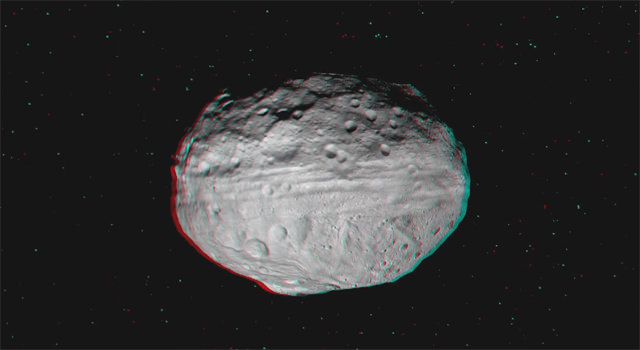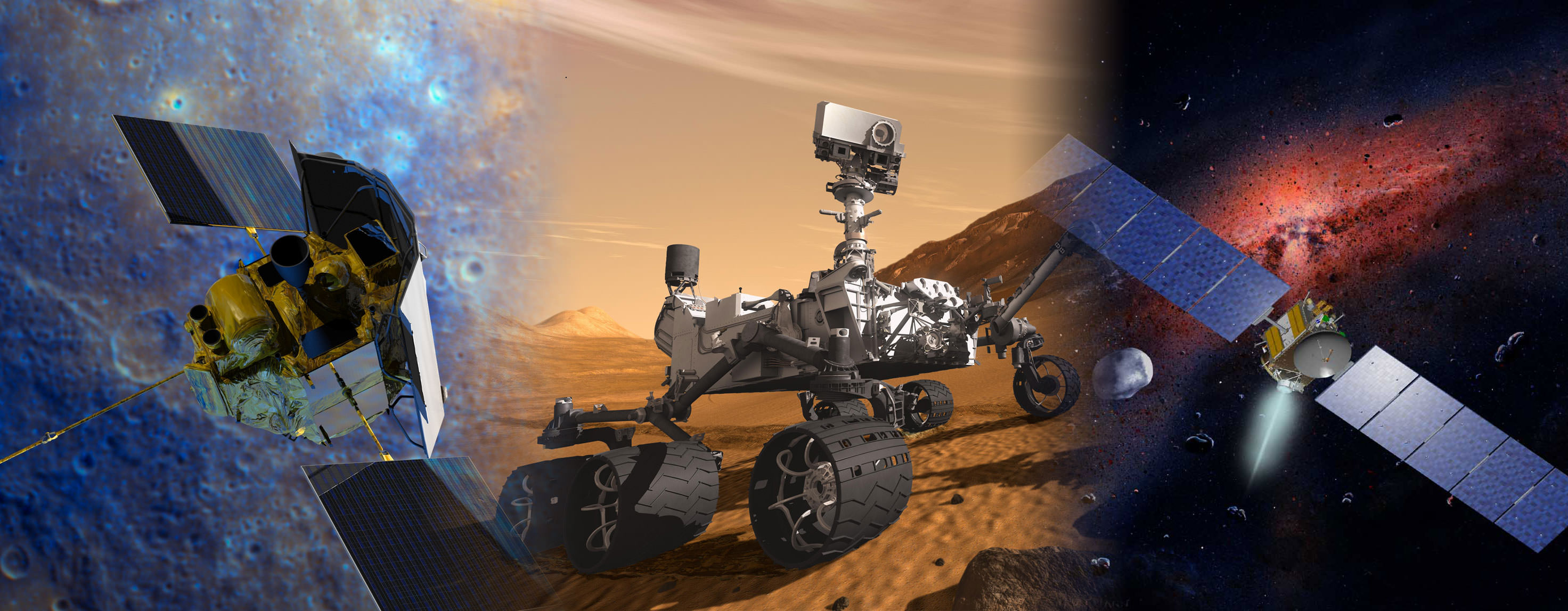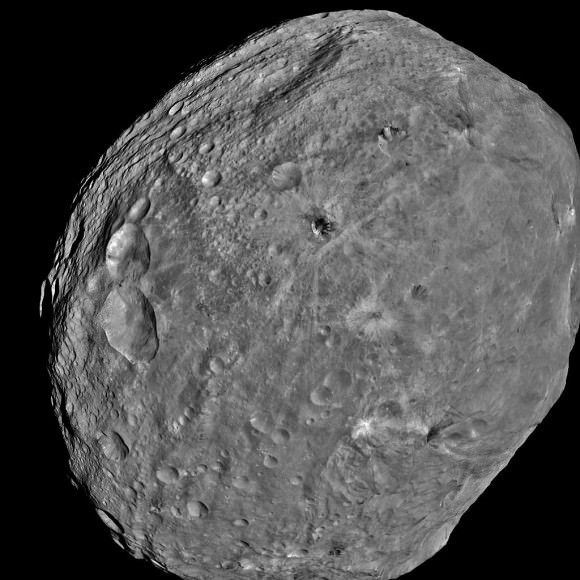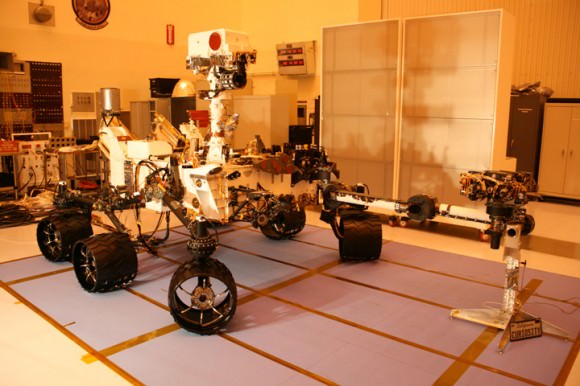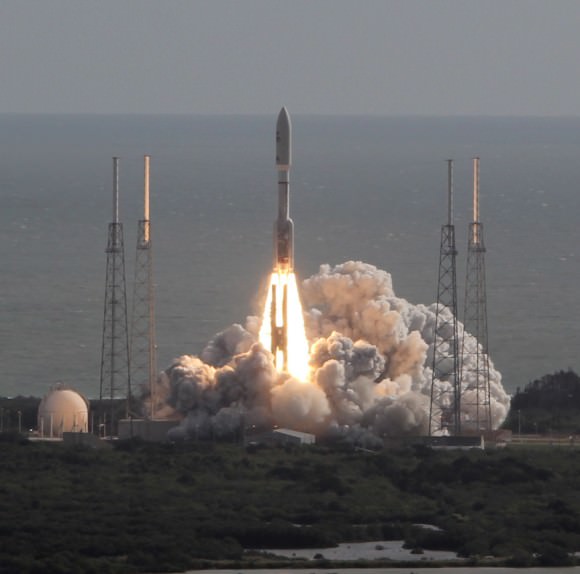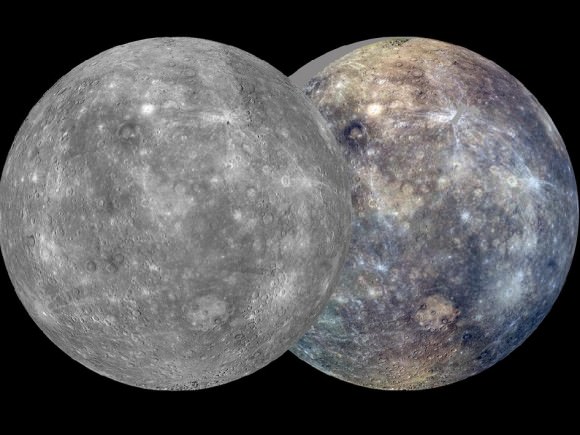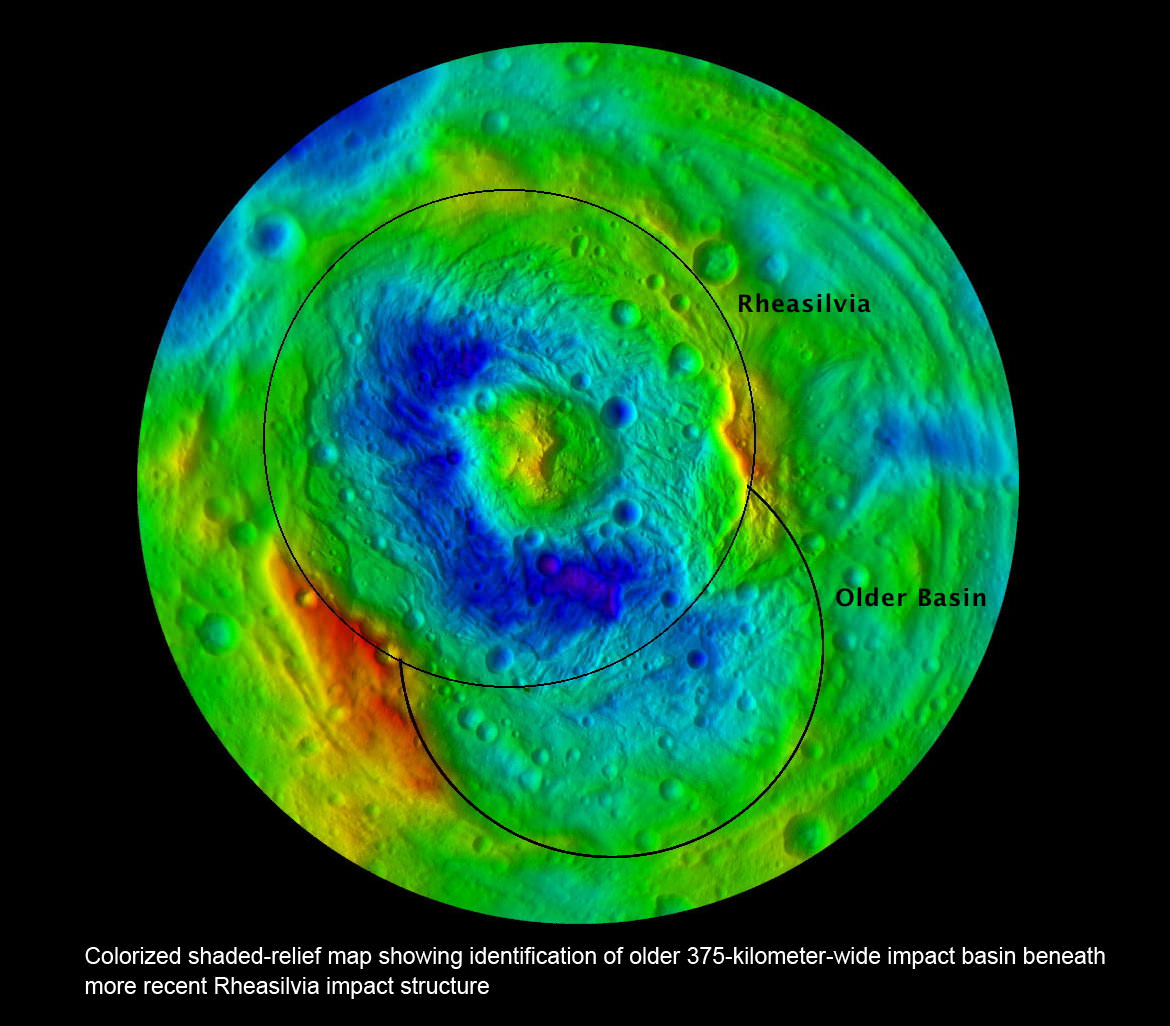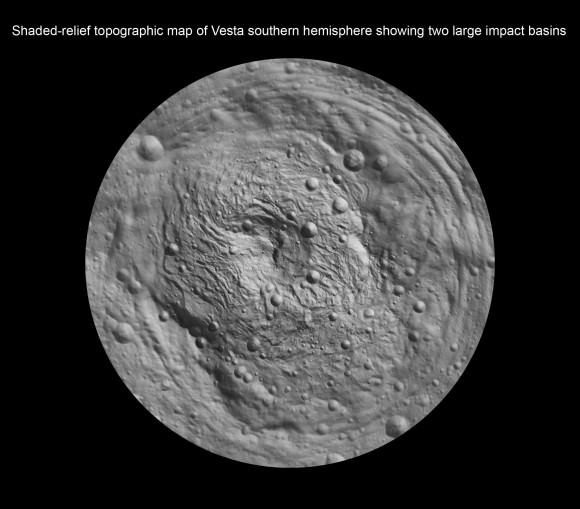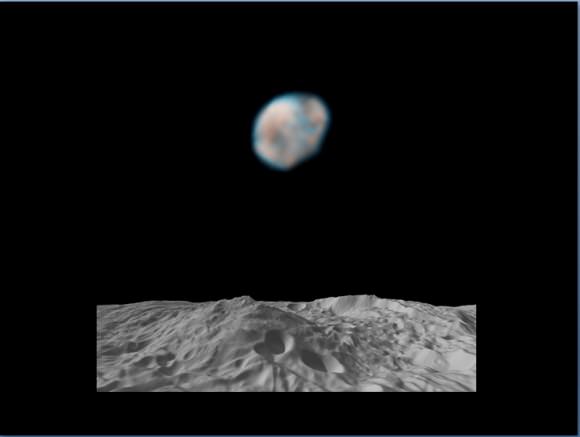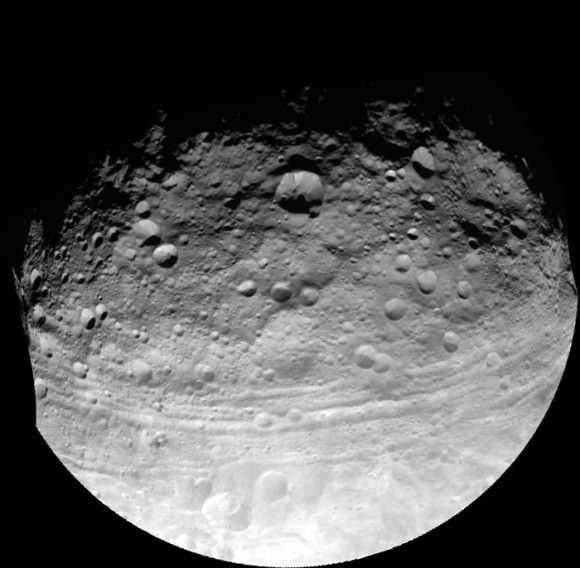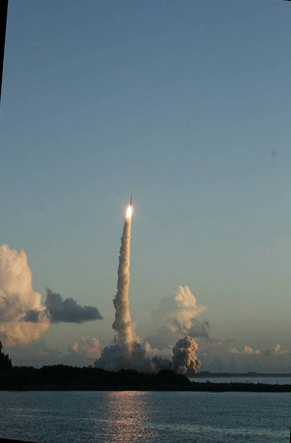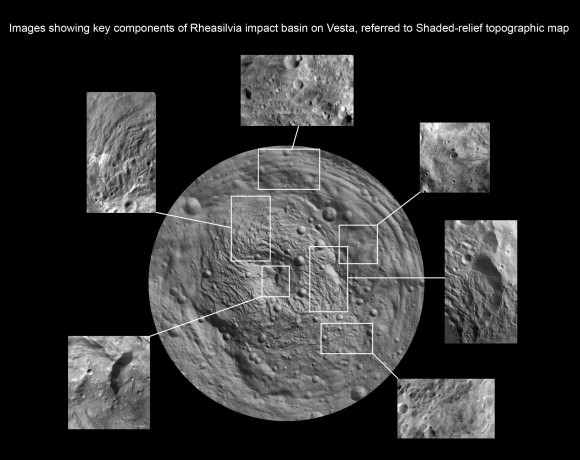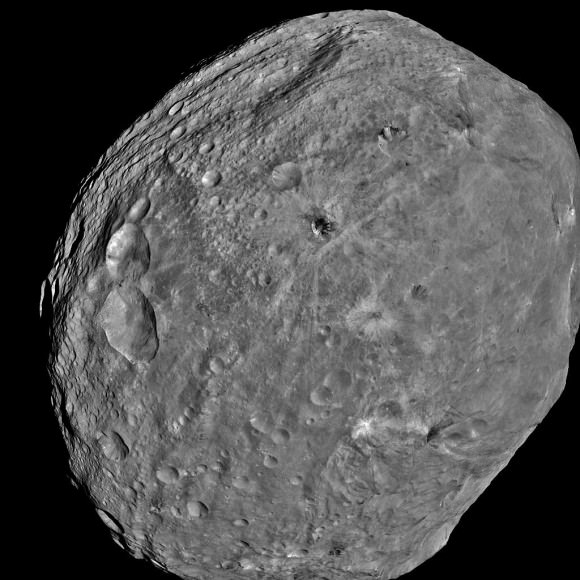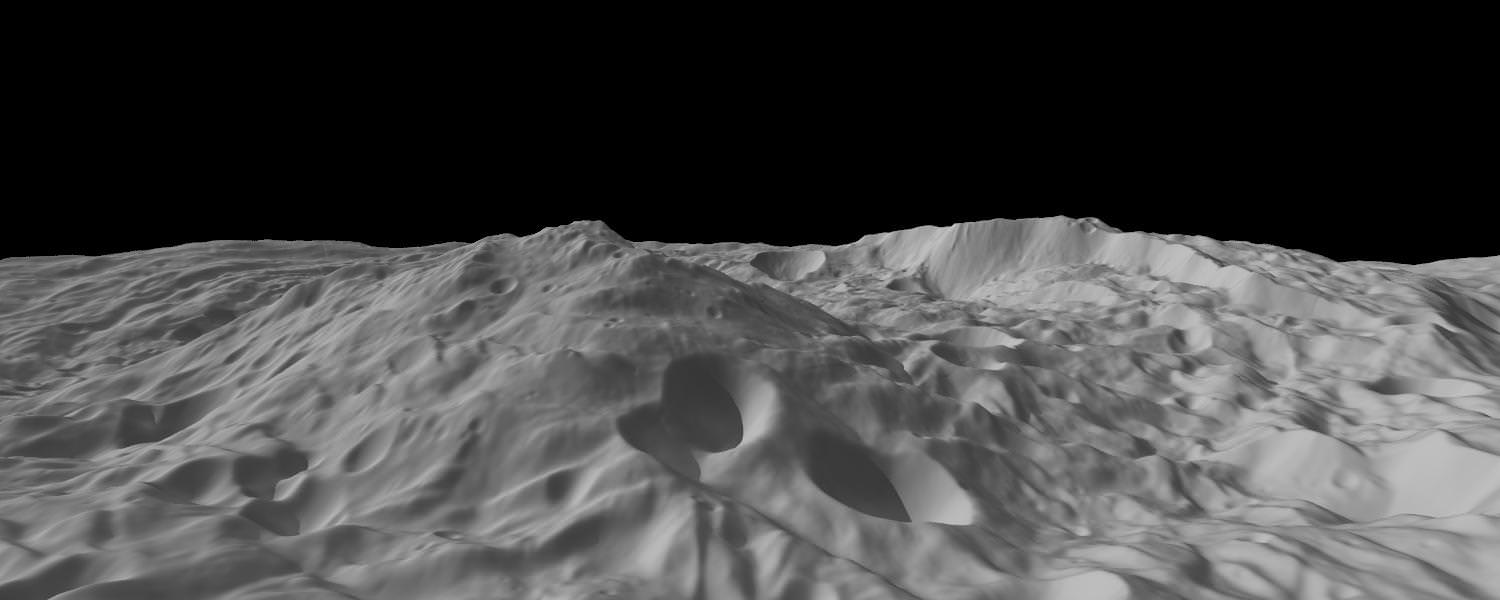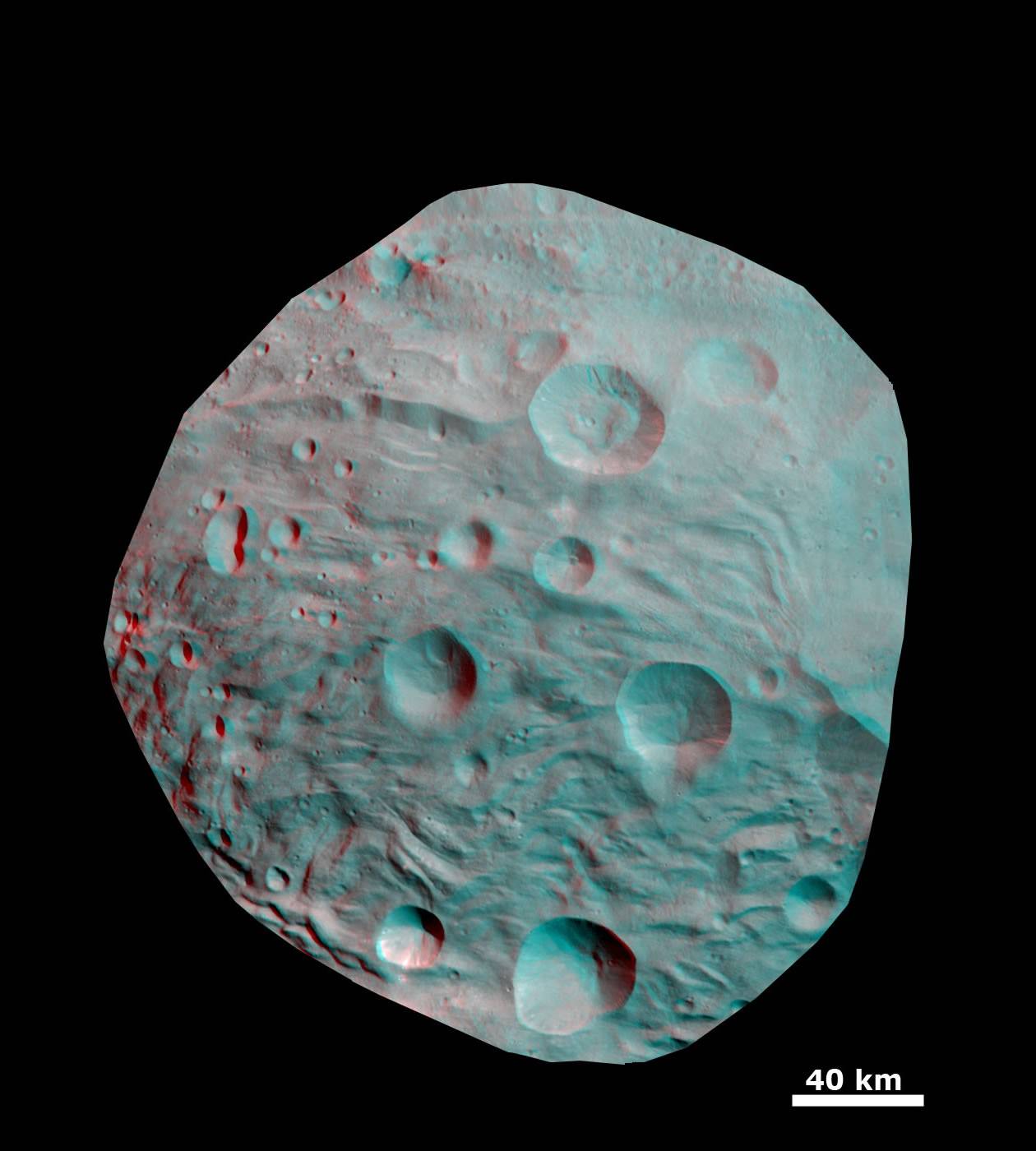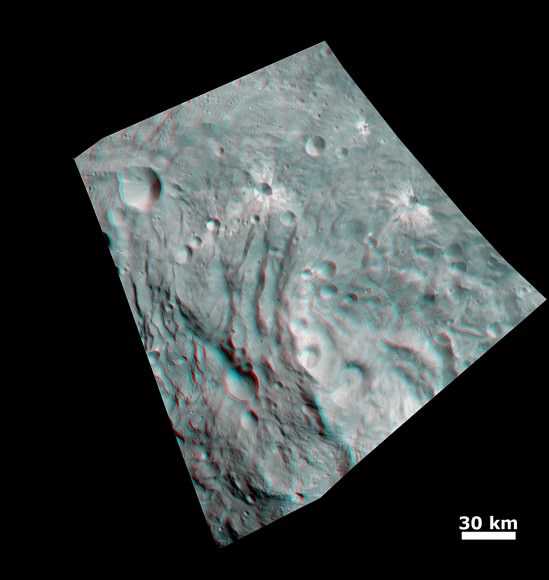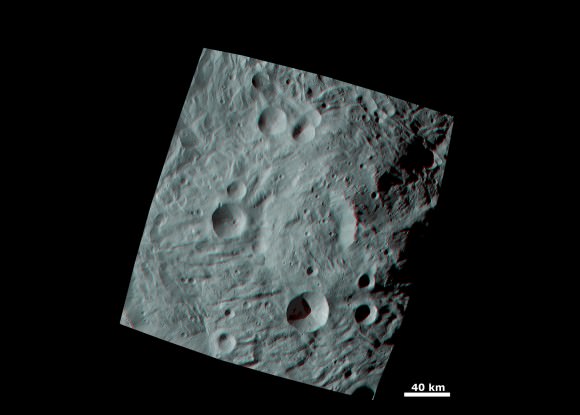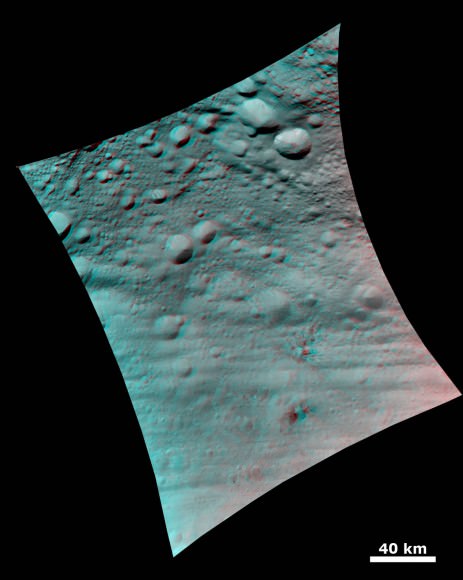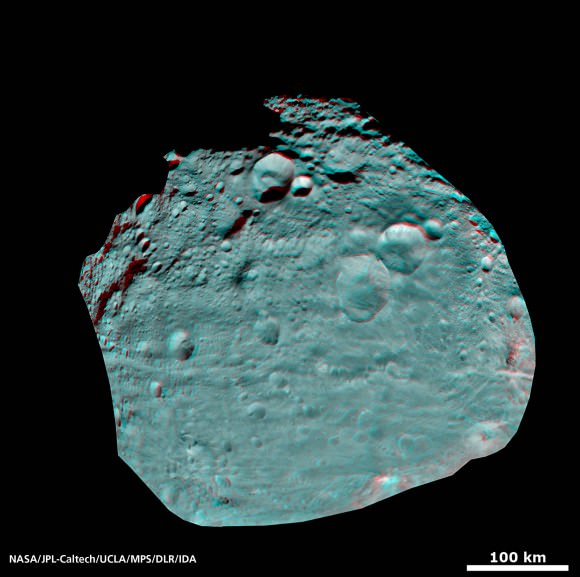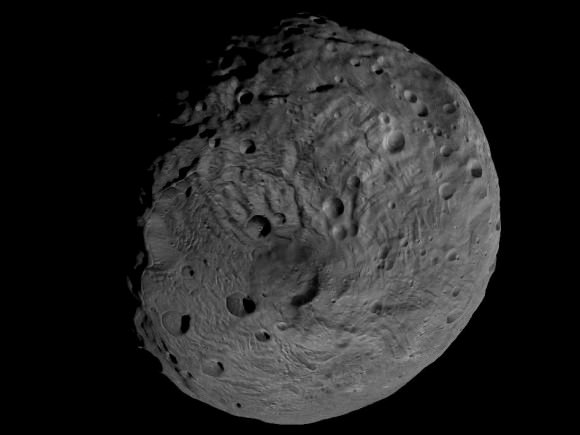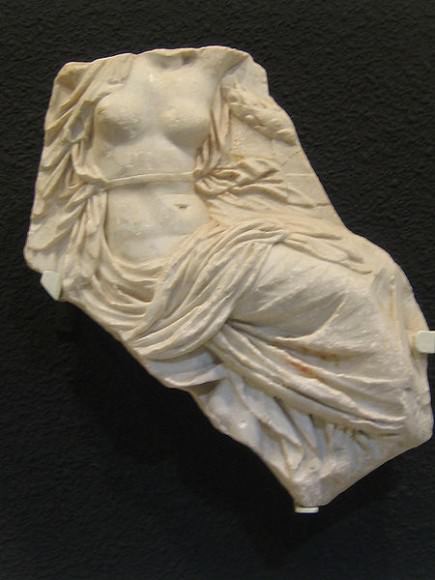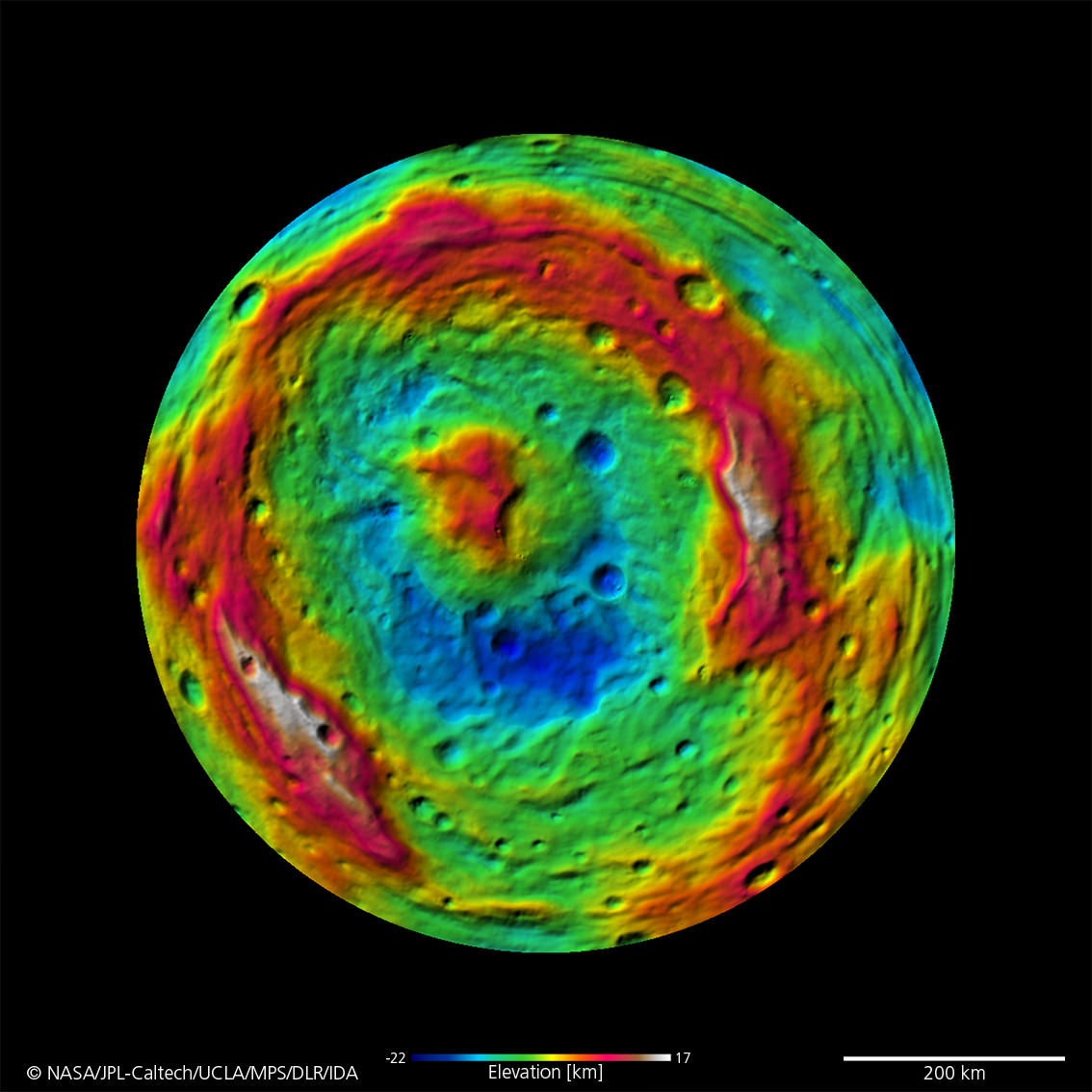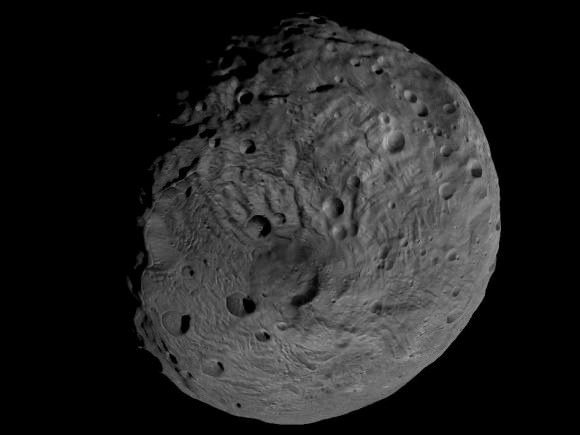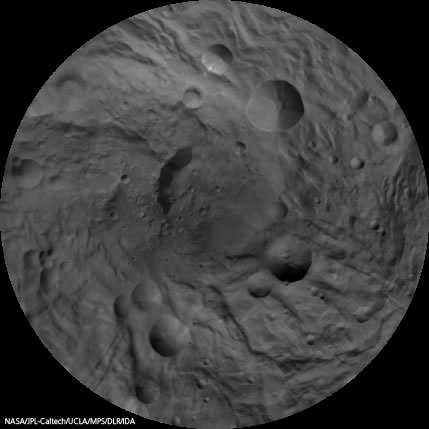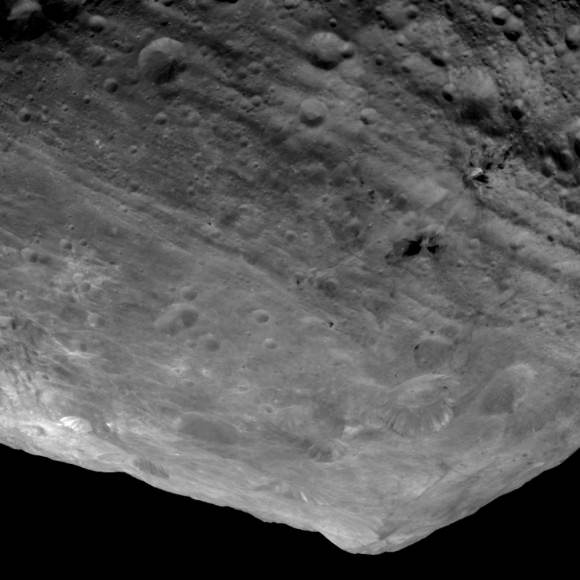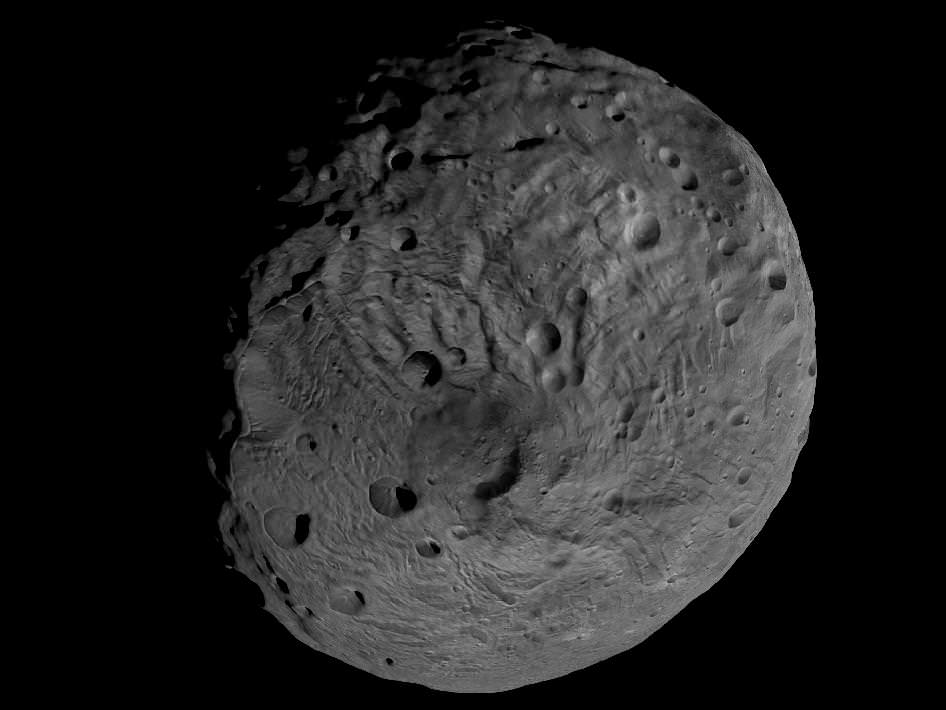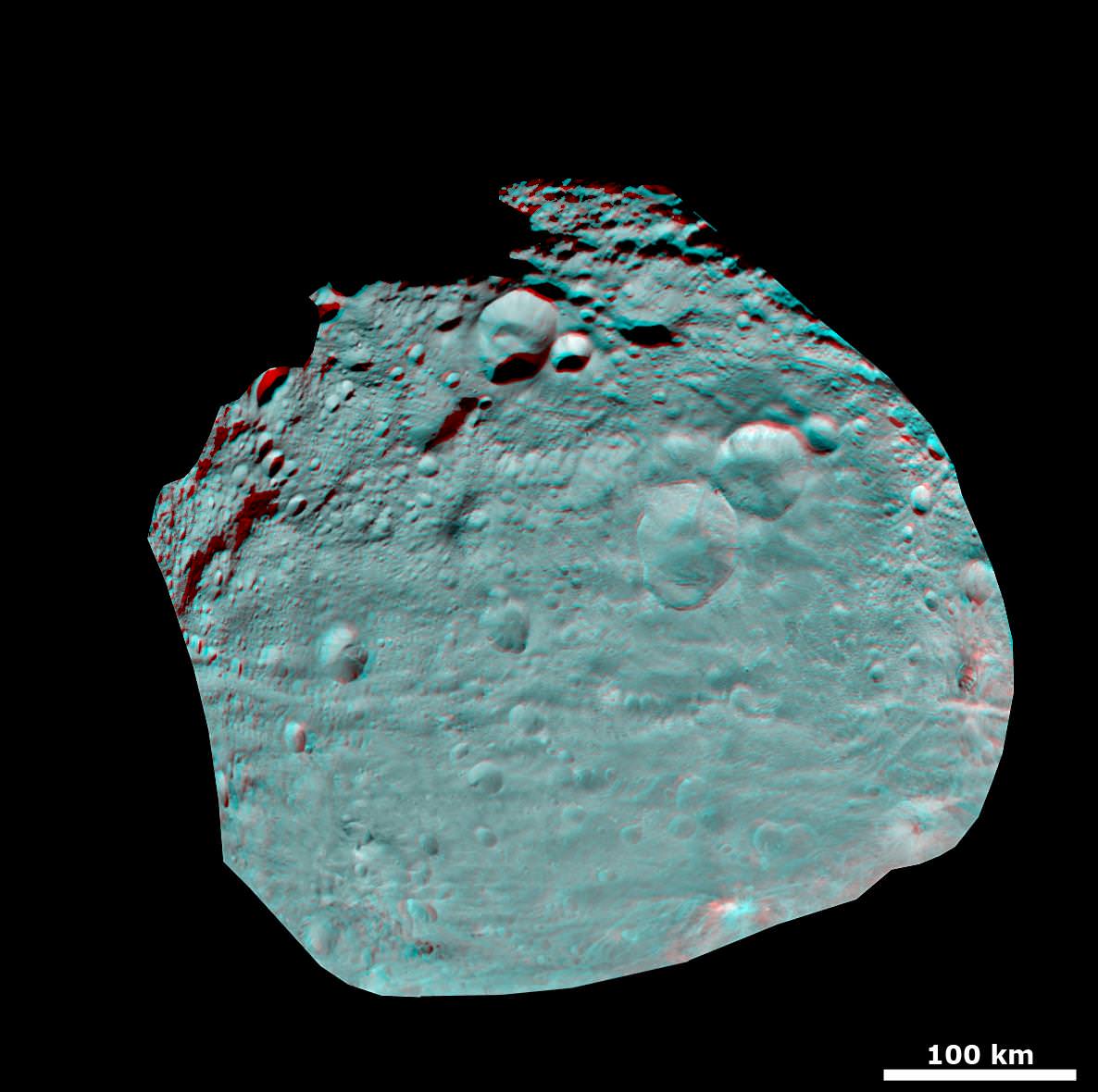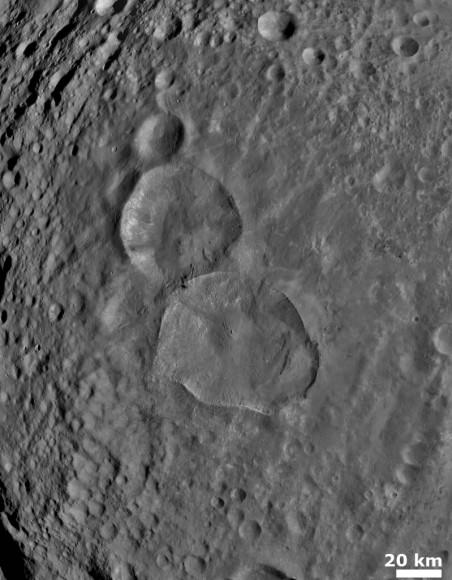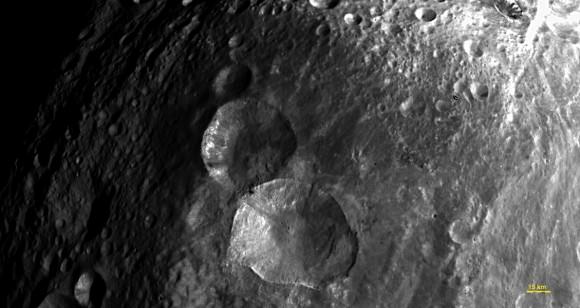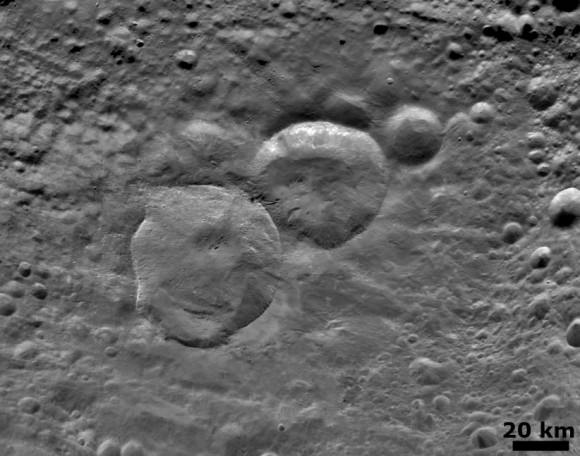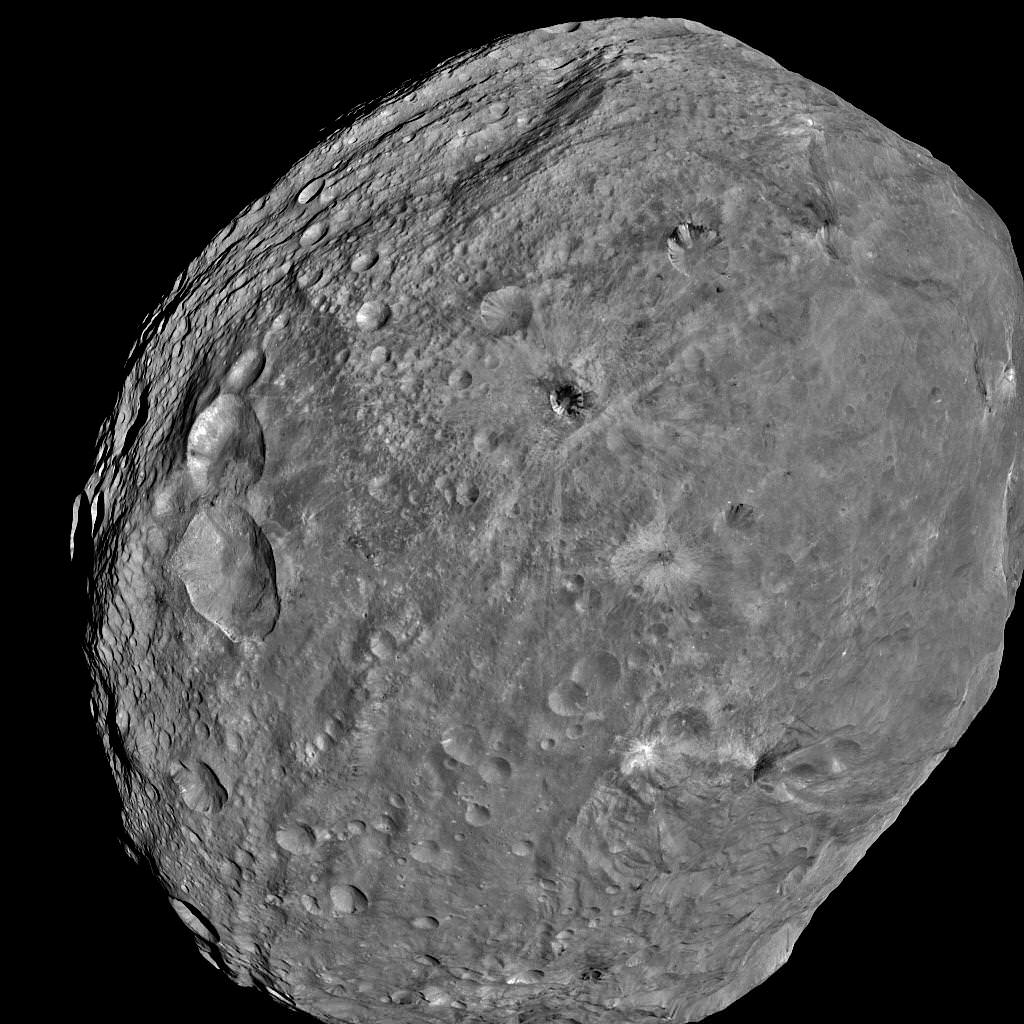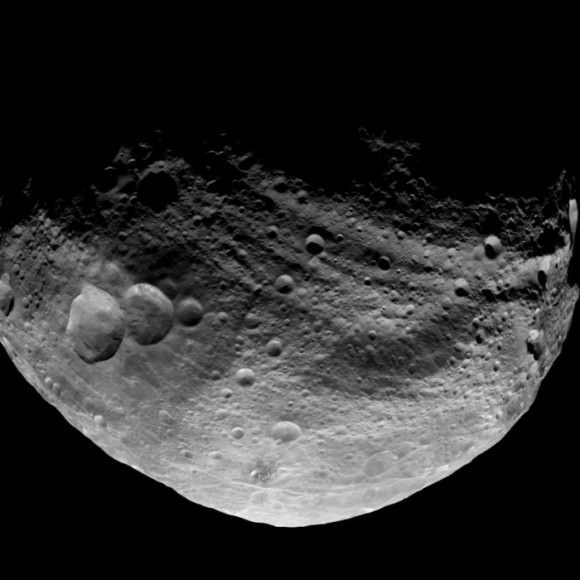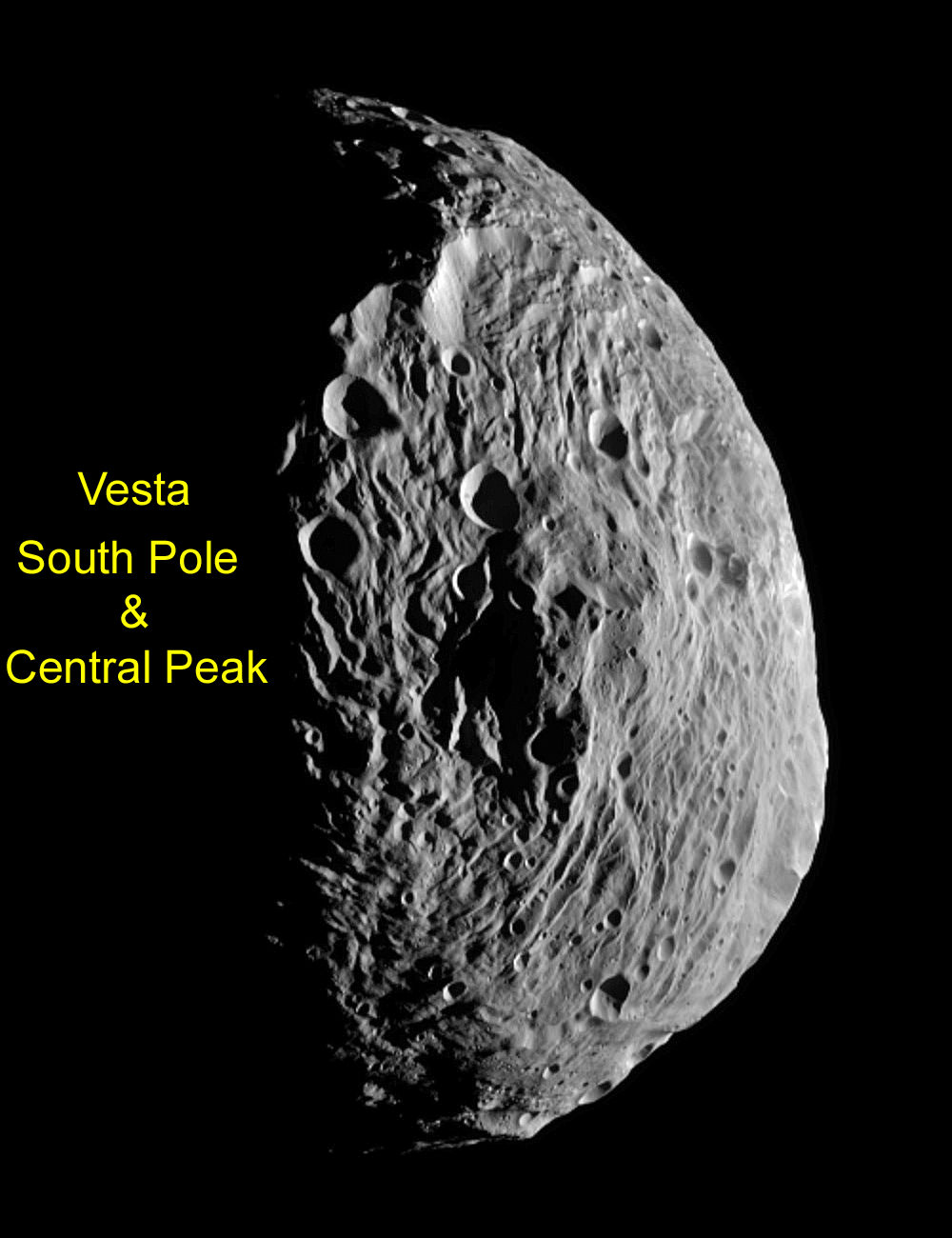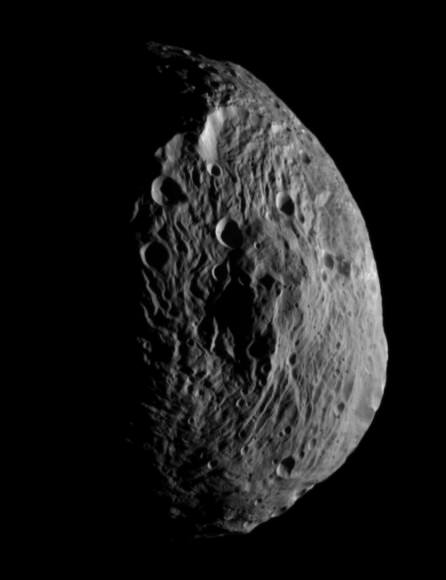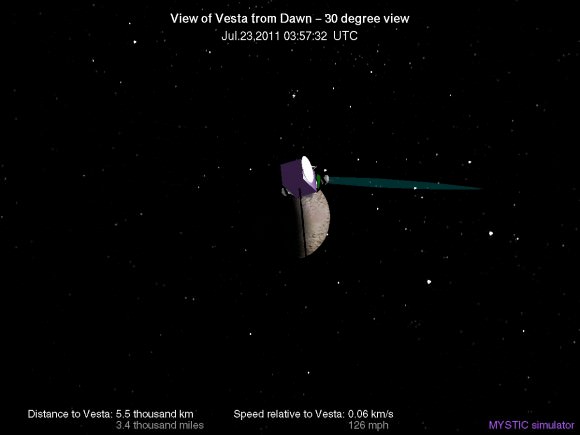[/caption]
It’s time to put on your 3-D glasses and go soaring all over the giant asteroid Vesta – thanks to the superlative efforts of Dawn’s international science team.
Now you can enjoy vivid ‘Vestan Vistas’ like you’ve never ever seen before in a vibrant 3 D video newly created by Dawn team member Ralf Jaumann, of the German Aerospace Center (DLR) in Berlin, Germany – see below.
To fully appreciate the rough and tumble of the totally foreign and matchless world that is Vesta, you’ll absolutely have to haul out your trusty red-cyan (or red-blue) 3 D anaglyph glasses.
Then hold on, as you glide along for a global gaze of mysteriously gorgeous equatorial groves ground out by a gargantuan gong, eons ago.
Along the way you’ll see an alien ‘Snowman’ and the remnants of the missing South Pole, including the impressive Rheasilvia impact basin – named after a Vestal virgin – and the massive mountain some 16 miles (25 kilometers) high, or more than twice the height of Mt. Everest.
Video Caption: This 3-D video incorporates images from the framing camera instrument aboard NASA’s Dawn spacecraft from July to August 2011. The images were obtained as Dawn approached Vesta and circled the giant asteroid during the mission’s survey orbit phase at an altitude of about 1,700 miles (2,700 kilometers). To view this video in 3-D use red-green, or red-blue, glasses (left eye: red; right eye: green/blue). Credit: NASA/JPL-Caltech/UCLA/MPS/DLR/IDA
“If you want to know what it’s like to explore a new world like Vesta, this new video gives everyone a chance to see it for themselves,” Jaumann said. “Scientists are poring over these images to learn more about how the craters, hills, grooves and troughs we see were created.”
NASA’s Dawn spacecraft is humanity’s first probe to investigate Vesta, the second most massive body in the main Asteroid Belt between Mars and Jupiter.
Video caption: 2 D rotation movie of Vesta. Compare the 2 D movie to the new 3 D movie. Credit: NASA/JPL-Caltech/UCLA/MPS/DLR/IDA.
Indeed Dawn was just honored by Popular Science magazine and recognized as one of three NASA Planetary Science missions to earn a ‘Best of What’s New in 2011’ for innovation in the aviation and space category – along with the Curiosity Mars Science Laboratory (MSL) and MESSENGER Mercury orbiter.
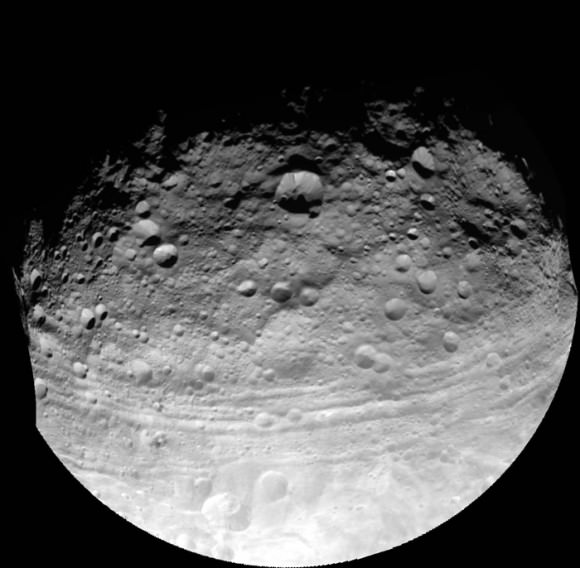
This full view of the giant asteroid Vesta was taken by NASA’s Dawn spacecraft on July 24, 2011, at a distance of 3,200 miles (5,200 kilometers). This view shows impact craters of various sizes and mysterious grooves parallel to the equator. The resolution of this image is about 500 meters per pixel. Credit: NASA/JPL-Caltech/UCLA/MPS/DLR/IDA
The images in the 3 D video were snapped between July and August 2011 as Dawn completed the final approach to Vesta, achieved orbit in July 2011 and circled overhead during the mission’s initial survey orbit phase at an altitude of about 1,700 miles (2,700 kilometers) in August.
How was the 3 D movie created?
“The Dawn team consists of a bunch of talented people. One of those talented people is Ralf Jaumann, Dawn co-Investigator from the DLR in Berlin,” Prof. Chris Russell, Dawn Principal Investigator, of UCLA, told Universe Today.
“Jaumann and the team behind him have stitched together the mosaics we see and they have made shape models of the surface. They are also skilled communicators and have been heroes in getting the Dawn Image of the Day together. I owe them much thanks and recognition for their efforts.”
“They wanted to make and release to the public an anaglyph of the rotating Vesta to share with everyone the virtual thrill of flying over this alien world.”
“I hope everyone who follows the progress of Dawn will enjoy this movie as much as I do.”
“It is just amazing to an old-time space explorer as myself that we can now make planetary exploration so accessible to people all over our globe in their own homes and so soon after we have received the images,” Russell told me.
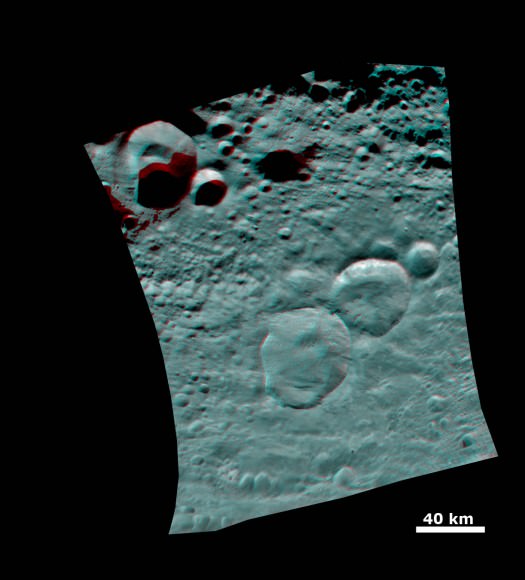
This anaglyph image shows the topography of Vesta's three craters, informally named the "Snowman," obtained by the framing camera instrument aboard Dawn on August 6, 2011. The camera has a resolution of about 260 meters per pixel.
Credit: NASA/JPL-Caltech/UCLA/MPS/DLR/IDA
Dawn is now spiraling down to her lowest mapping orbit known as LAMO (Low Altitude Mapping Orbit), barely 130 miles (210 kilometers) above Vesta’s surface.
“Dawn remains on course and on schedule to begin its scientific observations in LAMO on December 12,” says Dr. Marc Rayman, Dawn’s Chief Engineer from the Jet Propulsion Lab (JPL), Pasadena, Calif.
“The focus of LAMO investigations will be on making a census of the atomic constituents with its gamma ray and neutron sensors and on mapping the gravity field in order to determine the interior structure of this protoplanet.”
“Today, Dawn is at about 245 km altitude,” Rayman told Universe Today.
The 3 D video is narrated by Carol Raymond, Dawn’s deputy principal investigator at JPL.
“Dawn’s data thus far have revealed the rugged topography and complex textures of the surface of Vesta, as can be seen in this video”.
“Soon, we’ll add other pieces of the puzzle such as the chemical composition, interior structure, and geologic age to be able to write the history of this remnant protoplanet and its place in the early solar system.”
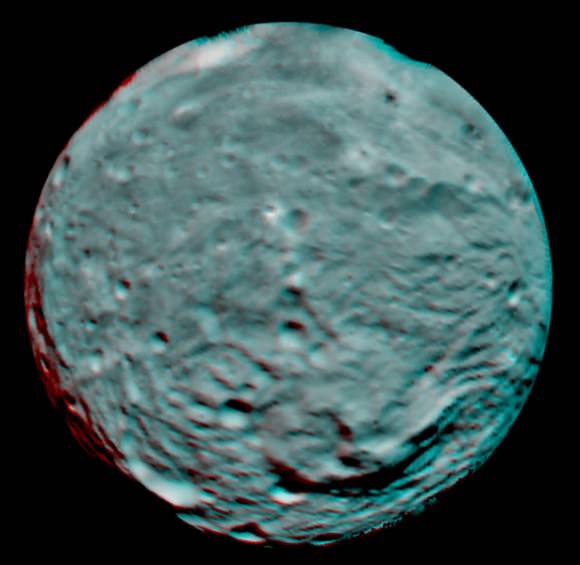
This anaglyph image of the south polar region was taken on July 9, 2011 by the framing camera instrument aboard NASA's Dawn spacecraft. Each pixel in this image corresponds to roughly 2.2 miles (3.5 kilometers). The anaglyph image shows the rough topography in the south polar area, the large mountain, impact craters, grooves, and steep scarps in three dimensions.
Credit: NASA/JPL-Caltech/UCLA/MPS/DLR/IDA
Read continuing features about Dawn by Ken Kremer starting here:
NASA Planetary Science Trio Honored as ‘Best of What’s New’ in 2011- Curiosity/Dawn/MESSENGER
Dawn Discovers Surprise 2nd Giant South Pole Impact Basin at Strikingly Dichotomous Vesta
Amazing New View of the Mt. Everest of Vesta
Dramatic 3 D Imagery Showcases Vesta’s Pockmarked, Mountainous and Groovy Terrain
Rheasilvia – Super Mysterious South Pole Basin at Vesta
Space Spectacular — Rotation Movies of Vesta
3 D Alien Snowman Graces Vesta
NASA Unveils Thrilling First Full Frame Images of Vesta from Dawn
Dawn Spirals Down Closer to Vesta’s South Pole Impact Basin
First Ever Vesta Vistas from Orbit – in 2D and 3D
Dawn Exceeds Wildest Expectations as First Ever Spacecraft to Orbit a Protoplanet – Vesta

